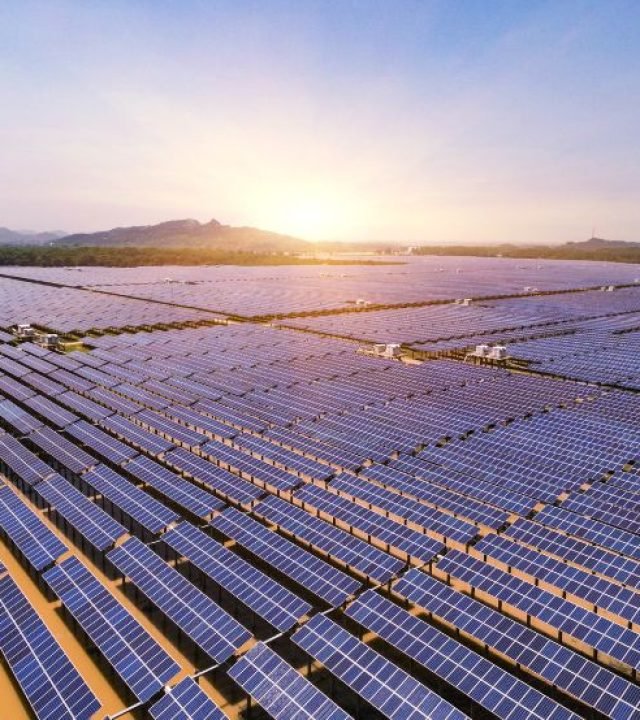Ground Mounted Solar Solutions
A ground-mounted solar power plant is an installation where photovoltaic (PV) panels are mounted on the ground, as opposed to being installed on rooftops. These systems are commonly used for large-scale solar energy production and have several key components and considerations:

Maximizing Efficiency in Ground-Mounted Solar Power Plants
Ground-mounted solar systems are generally more efficient than rooftop systems, even when both receive the same amount of sunlight. This increased efficiency is due to several factors.
Unlike rooftop solar panels, which are typically installed at a fixed angle and position, ground-mounted panels can be strategically placed with an optimal tilt angle and orientation to maximize sunlight exposure throughout the day.
Additionally, ground-mounted systems can incorporate solar tracking devices. These trackers adjust the angle of the panels to follow the sun’s movement across the sky, ensuring that the panels remain perpendicular to the sun’s rays. This dynamic positioning significantly boosts the system’s overall efficiency.
Benefits
- Scalability: Ground-mounted systems can be scaled up to generate large amounts of power.
- Efficiency: Panels can be optimally positioned and angled to maximize sunlight exposure.
- Land Use Flexibility: Can be installed on various types of land, including unused agricultural land or brownfield sites.
- Ease of Access: Easier to access for maintenance compared to rooftop installations.
Components
- Solar Panels: The PV panels, which convert sunlight into electricity.
- Inverters: Convert the direct current (DC) produced by the solar panels into alternating current (AC) for use in the power grid or by local consumers.
- Mounting Structures: The frameworks that support the solar panels, typically made of aluminum or steel.
- Electrical Components: Including wiring, combiner boxes, and transformers to manage the flow of electricity.
- Monitoring Systems: Track the performance and output of the solar plant.
Considerations
- Site Selection: Choosing a location with optimal sunlight exposure, minimal shading, and suitable land conditions.
- Environmental Impact: Assessing and mitigating any potential impact on local ecosystems and wildlife.
- Land Use: Ensuring the land is suitable for development, considering factors like soil stability and potential future use.
- Regulatory Compliance: Adhering to local, state, and federal regulations, including obtaining necessary permits and approvals.
- Grid Connection: Ensuring the plant can be connected to the local power grid and that the grid can handle the additional power input.
- Maintenance: Regular cleaning of panels, checking electrical components, and maintaining the physical structure.
Warranty Information
- 5 Years Warranty for Inverter. Extended 10 years warranty option available on selected inverters
- 25 Years performance warranty on photovoltaic panels , APS or Equivalent IEC Make
- Installation by Government accredited electricians as per the MNRE/ GEDA Specifications
- 60 months workmanship warranty available
Ground-mounted solar power plants are an essential component of renewable energy strategies, contributing significantly to reducing greenhouse gas emissions and promoting sustainable energy sources.
